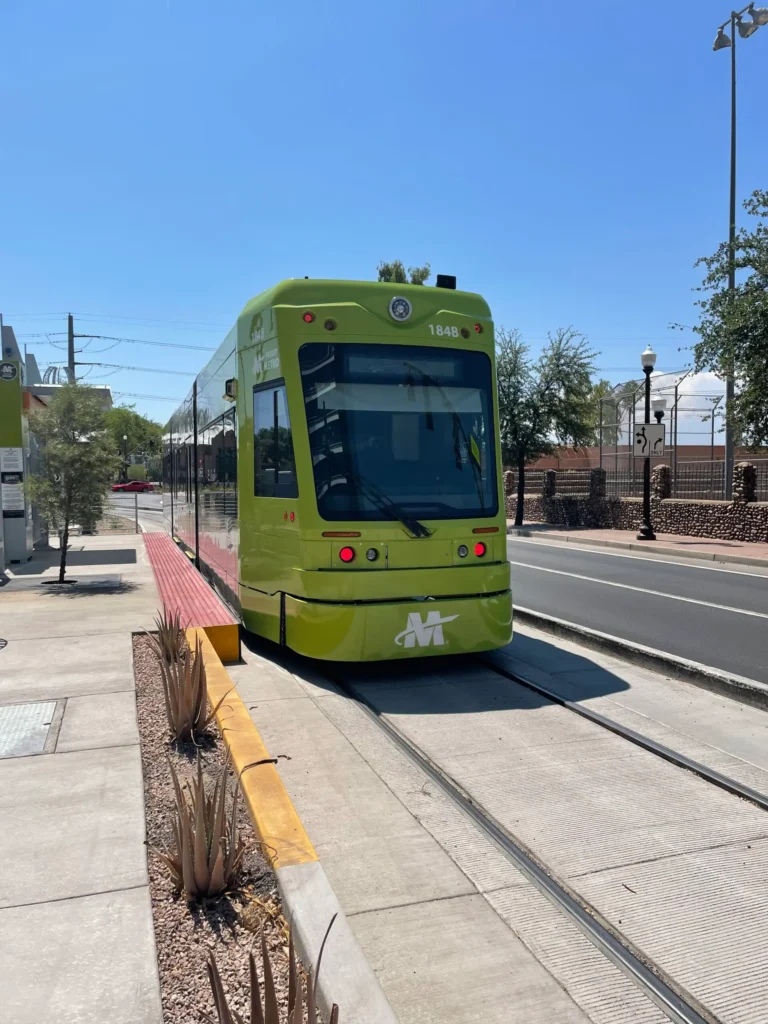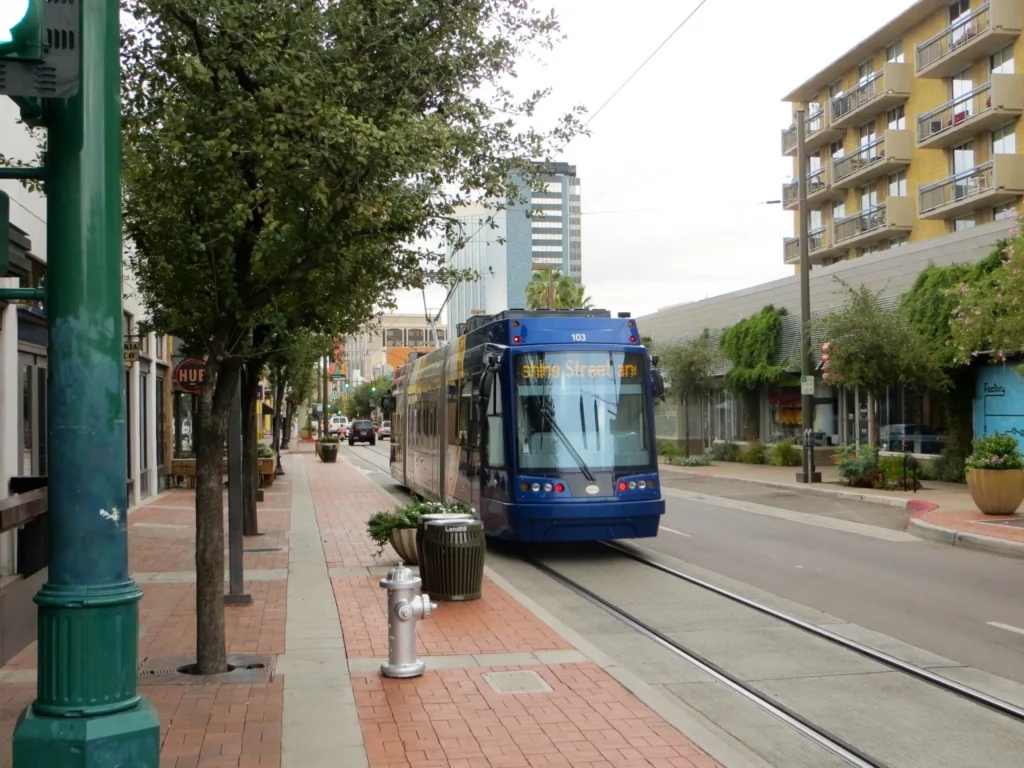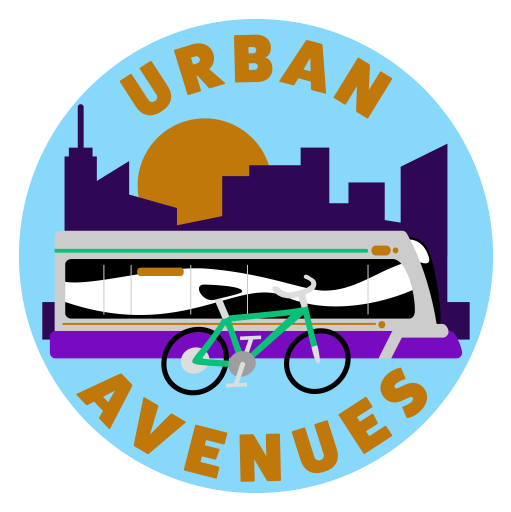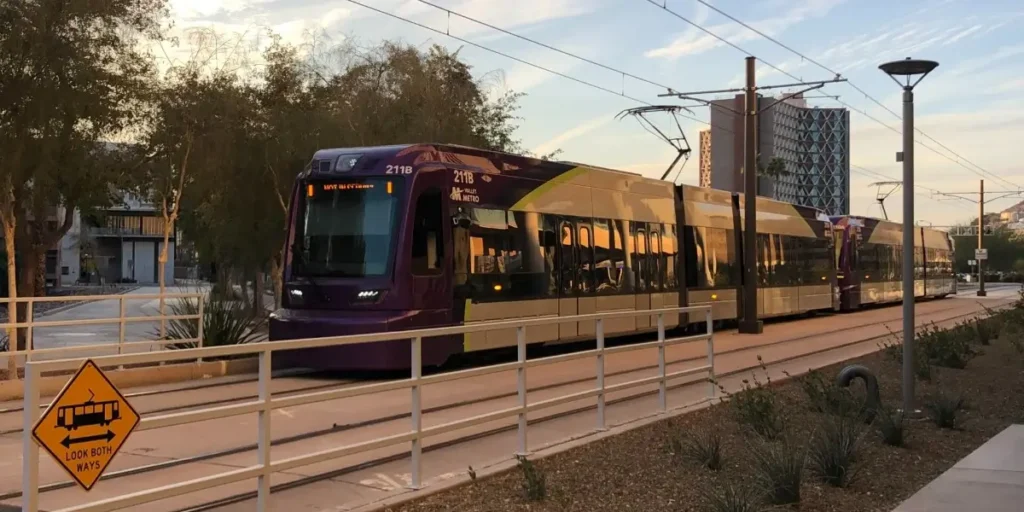Welcome to 50 States of Transit, Urban Avenues series on transit in the United States. The US is often maligned for its lack of transit and car-dependency – and much of that is deserved; however, this vast country has a lot of bright spots in transit that also deserve their praise. In this series, we will cover each state, from the most urban centers to the most rural areas, and shed light on how Americans are working towards a future where a car will not be the only mode of travel.
Our first state in the series is Urban Avenues home state of Arizona. Known for its parched deserts and endless sprawl, it’s not exactly a model for sustainable urban design. But the state, like many others in the Sunbelt, has been improving its transit network for decades now and is slowly loosening its grip on the car-centric culture that looms over it.
Phoenix
Look, we don’t have to tell you Phoenix is not up to par with similar sized cities across the country. Even what I consider to be its closest peer – Houston – is having a bit of a moment in the urbanist space (loose zoning and solid green spaces will do that!). But things have significantly improved here over the past 15 years and are expected to continue doing so.
Transporting Phoenicians around the City is Valley Metro, the city’s bus, light rail, and streetcar operator. As of December 2023, they operate a single light rail line and an expansive bus network throughout the metro. Valley Metro light rail service began in 2008 and has grown to a 28 mile line serving Phoenix and the suburbs of Tempe and Mesa. In 2024, this is anticipated to be extended another 7 miles with extensions to the Metrocenter Mall redevelopment and the along the south central corridor in Phoenix. The good news came while this was being written that the Metrocenter extension will open on January 27, 2024. Further expansion to the west valley via a route in the Interstate 10 right-of-way is also in the planning stages. Streetcar service was introduced in 2022 to Tempe when Valley Metro completed the Tempe Streetcar, a 3 mile line that provides better access to Arizona State University (ASU) via two transfer points to the light rail. The Tempe streetcar seems to have learned from streetcars past and does not run in mixed traffic for roughly half its route.

The bus system makes use of the grid network here, and provides decent service within the core of the city. Within central Phoenix, most routes run 15 minute weekday service and 30 minutes weekend service, along with a couple routes in the east valley. Most other routes are only providing 30 minute to hourly service. A BRT program has been created with the City of Phoenix and Valley Metro to identify corridors and begin the planning process. The route furthest along as of right now would connect downtown Phoenix to the Metrocenter redevelopment via 35th Avenue, however it’s too early to say whether this will be a true BRT or “BRT-lite” style system.
It’s worth noting that a system-wide fare enhancement is about to be completed, with mobile ticketing on a new app and new reloadable Copper Cards (yay for AZ related branding!). I can say anecdotally that this has made it much easier to pay on a mobile app and schedule trips, which is key when headways aren’t the best.
Tucson
This blogger’s hometown, Tucson, is the quirky little sibling to Phoenix. By being smaller and under the shadow of a much larger City, Tucson has seen more measured growth and retained a lot of the bones that Phoenix lost in the post-war suburbanization of America. This is not to say it doesn’t sprawl, but that its sprawl is better countered by a more cohesive urban fabric within the city.
Suntran in the main service provider for Tucson, with a bus system and streetcar that connects the downtown to the University of Arizona. The bus system is fine, nothing too impressive. Major routes with 15 minute peak service and 30 minute off peak, both weekday and weekend. Planning is also underway for two BRT services that will connect downtown to a north side transit hub and to Tucson International Airport.
Streetcar systems can be maligned in this country – and rightly so – but the Tucson Sunlink streetcar has largely been a success. Opening in 2014, it’s one of the highest ridership (riders/vehicle hour) streetcar systems in America. This is due to several factors; such as the longer 3.9-mile route, connections to every dense area of the City, 10-15 minute clockface scheduling, and noticeable transit lanes/dedicated ROW. Suntran has made both the bus and streetcar systems fare free since the beginning of the COVID-19 pandemic.
 Tucson Sun Tran (Photo by David Wilson)
Tucson Sun Tran (Photo by David Wilson)Intercity Rail
Phoenix manages to be the largest City in the country without direct Amtrak service. Despite a downtown Union Station, Amtrak left the City in 1996 and beginning serving the far flung exurb of Maricopa, AZ with the three-time-weekly Sunset Limited route. Maricopa is approximately 40 miles from Central Phoenix and not much closer to any of its suburbs, so there has been momentum building to bring back passenger rail to the original Union Station hub. In December of 2023 this was further supported with a $500k federal grant as part of Amtraks Corridor ID program. This money will go towards further studies of a service connecting Phoenix and Tucson. Elsewhere in the state, The Sunset Limited already serves downtown Tucson and their revitalized Union Station, which includes a restaurant, market, and a small museum on the history of transportation in Southern Arizona.
Further north, the daily Amtrak Southwest Chief service between Los Angeles and Chicago serves the Arizona cities of Winslow, Flagstaff, and Kingman, roughly along the I-40/Route 66 highway.
Other Systems/Services
Outside of the major metropolitan areas, several smaller cities in the state provide bus service. Flagstaff, Kingman, Sierra Vista, Yuma, Prescott, and Lake Havasu City are all served by bus systems with multiple routes and respectable frequencies. Smaller bus systems and shuttle services exist in Sedona and Payson. Both Navajo and Hopi Reservations also have services that provide good coverage more rural areas of the state.
The goal of this series will always be to focus on the progress being made in a state – and country – that may sometimes frustrate its residents as we look abroad to find the urban design we want. Arizona has a long way to go, but we’re happy to see all the progress that’s already been made. We hope you enjoy this series and see all the work this country is doing to ensure we can have a choice when we travel!

